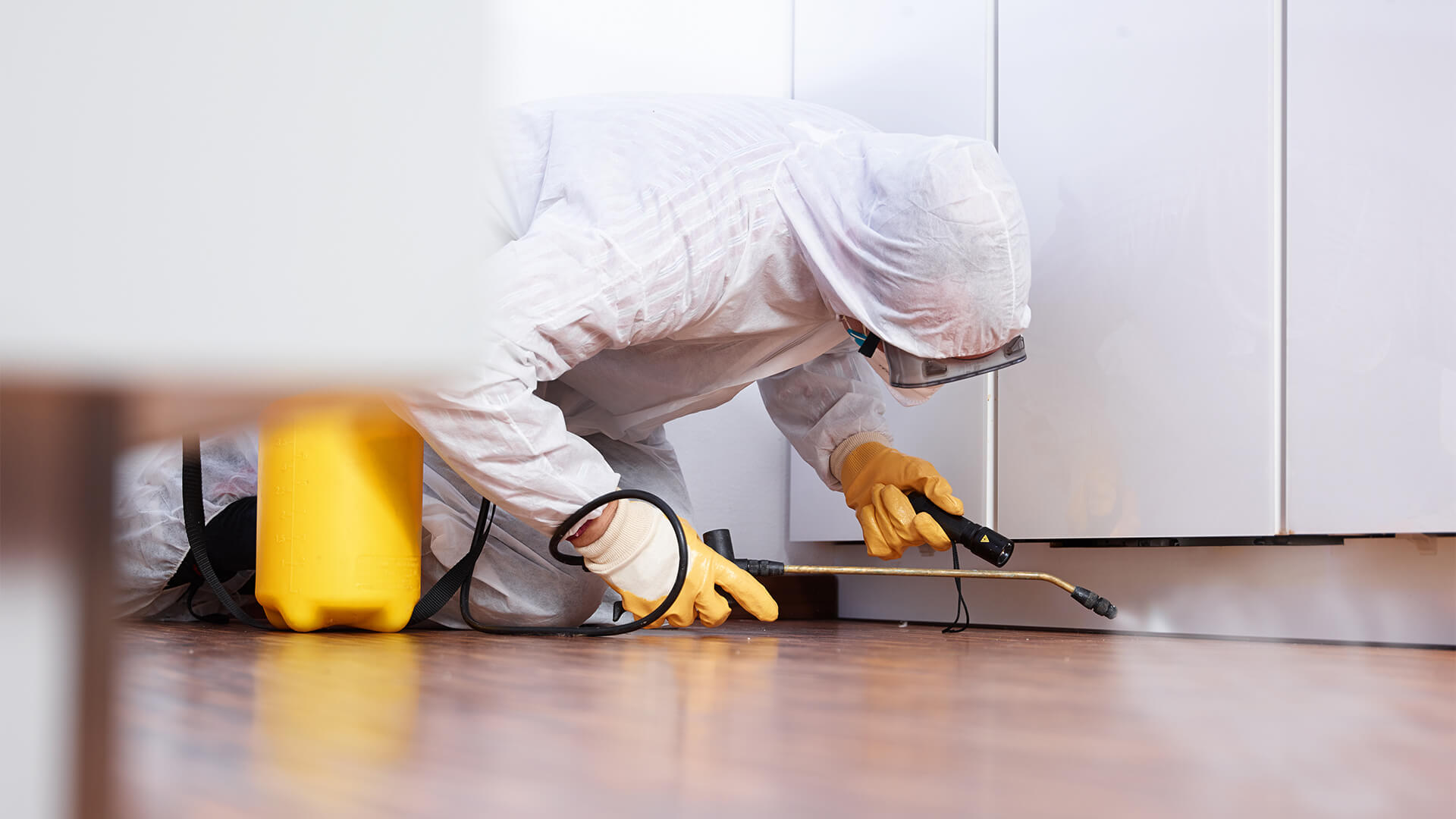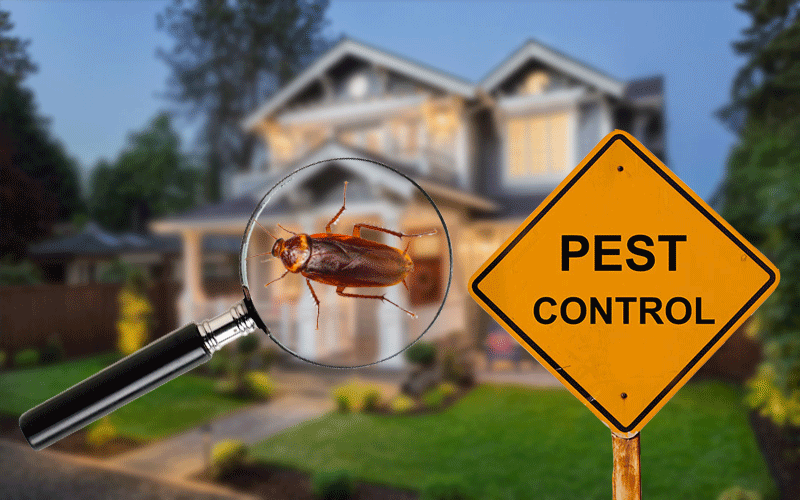A1 Bed Bug Exterminator Charlotte - Effective and Economical Services
A1 Bed Bug Exterminator Charlotte - Effective and Economical Services
Blog Article
Bed Pest Therapy Malfunction: Contrasting Chemical Vs. Non-Chemical Solutions
In the world of bug control, especially when taking care of the consistent concern of bed insects, the choice in between chemical and non-chemical therapy remedies can be a pivotal one. Both approaches provide distinctive advantages and downsides, affecting aspects such as performance, security factors to consider, and overall cost. By examining the nuanced information of each technique, a clearer understanding of which course to seek in resolving a bed bug infestation can be acquired.
Effectiveness of Chemical Treatments
Chemical treatments for bed pest infestations have been widely acknowledged for their quick and potent effectiveness in eliminating these bugs. When taking into consideration the efficiency of chemical treatments, it is essential to recognize that they can provide a extensive and fast solution to a bed bug problem. Professional pest control experts frequently depend on pesticides to target bed insects at numerous stages of their life process, consisting of grownups, eggs, and nymphs. These chemicals typically work by disrupting the bed bugs' nerve system, bring about paralysis and ultimate fatality.
Furthermore, chemical therapies have the benefit of providing recurring effects, indicating that they can remain to get rid of bed insects even after the first application. This residual activity is especially valuable in combating any potential re-infestations. Furthermore, the fast action of chemical therapies can bring alleviation to individuals facing serious bed insect problems, permitting them to restore control of their space rapidly.
Safety Worry About Chemical Solutions
One essential aspect that calls for mindful factor to consider when using chemical solutions for bed insect treatment is guaranteeing the safety and security of residents and the atmosphere. While chemical therapies can be efficient in eliminating bed bugs, they might posture threats otherwise handled appropriately. Among the primary safety and security interest in chemical options is the potential damage they can cause to human health and wellness. Exposure to particular chemicals utilized in bed insect treatments can bring about respiratory issues, skin irritation, or other adverse responses, specifically in people with pre-existing conditions or sensitivities. In addition, incorrect application or dosage of chemical pesticides can result in toxic residues remaining in the cured area, positioning long-term wellness dangers to occupants.
Furthermore, the environmental impact of chemical solutions is one more significant consideration. Some pesticides utilized in bed bug therapies may be damaging to valuable insects, wildlife, and ecosystems if they seep into the soil or water systems. It is important to make use of chemical treatments carefully, adhering to safety and security guidelines, and taking into consideration much less toxic alternatives to alleviate these risks and make sure the risk-free and effective administration of bed pest infestations.
Benefits of Non-Chemical Strategies
Considering the possible safety worries and environmental influence connected with chemical remedies for bed pest therapy, checking Recommended Reading out non-chemical approaches provides an appealing alternative with a number of unique benefits. Non-chemical therapies are eco pleasant, as they do not contribute to air or water pollution, making them a lasting choice for bug control.
Additionally, non-chemical options can be effective in targeting bed insects, including hard-to-reach locations where chemical therapies might not pass through - A1 bed bug exterminator charlotte. Techniques such as heat treatment, vacuuming, steam cleaning, and bed mattress coverings provide extensive obliteration without the use of hazardous chemicals.
Limitations of Non-Chemical Treatments

Furthermore, informative post non-chemical therapies frequently need several applications to attain successful eradication. This can be time-consuming and may not constantly guarantee full elimination of all bed insects and their eggs, particularly in surprise or hard-to-reach places.
In addition, the success of non-chemical therapies heavily relies upon proper implementation and thoroughness, which can be challenging for individuals without expert expertise. Insufficient application of non-chemical techniques might result in insufficient removal, causing consistent problems and the requirement for extra therapies.
As a result, while non-chemical treatments have their advantages, it is essential to recognize these limitations and consider them when establishing the most efficient strategy for managing bed pest problems.
Cost Comparison: Chemical Vs. Non-Chemical Options
Given the restrictions related to non-chemical treatments, an important element to assess in the context of bed pest administration is the expense contrast in between chemical and non-chemical options. Chemical treatments usually entail the application of insecticides by experts, which can vary from $250 to $900 per space, depending on the intensity of the infestation and the dimension of the area to be treated. In comparison, non-chemical therapies like heat treatment or heavy steam can be extra pricey, with costs varying from $1,000 to $6,000 for a whole home. While the initial price of chemical treatments might seem reduced, multiple therapies may be required to completely eliminate the problem, potentially enhancing the overall price. On the other hand, non-chemical choices might offer a much more eco-friendly and lasting service, although they can be cost-prohibitive for some individuals. Inevitably, when thinking about the price of bed pest therapy options, it is very important to consider exterminator prices the ahead of time expenditures versus the efficiency and long-term sustainability of the selected approach.
Verdict

Considering the possible security worries and environmental impact connected with chemical remedies for bed bug treatment, exploring non-chemical techniques provides a promising alternative with a number of distinctive advantages.Offered the restrictions associated with non-chemical treatments, an essential element to assess in the context of bed pest management is the cost contrast in between chemical and non-chemical options. In comparison, non-chemical therapies like warmth therapy or steam can be extra pricey, with costs ranging from $1,000 to $6,000 for a whole home. While the initial expense of chemical therapies may appear reduced, multiple treatments might be needed to completely get rid of the infestation, possibly boosting the overall price.In final thought, when comparing chemical and non-chemical bed pest treatment choices, it is necessary to consider effectiveness, security, advantages, limitations, and expense.
Report this page